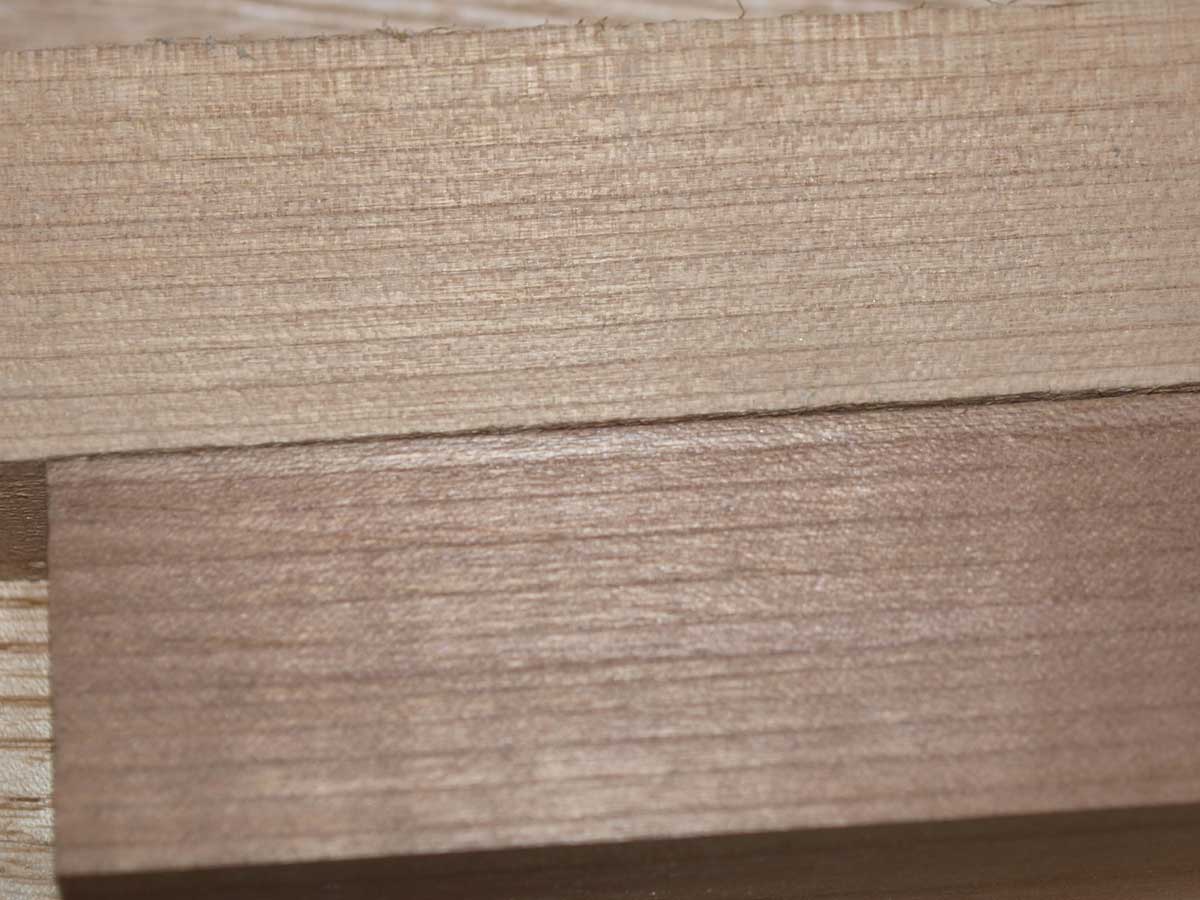condeesteso
Established Member
This has been on threads before, but some time ago. I was first introduced to this at school by my old woodwork teacher (who was quite old-school then and that was back in the late 60s). I don't see it around much these days, but wanted to test it before considering using it for some components on an heirloom box to be made.
I got some 'ammonia' cleaner from the local hardware store, but then found some open in the cleaning cupboard - Homebase 10%. On a previous thread I had seen that whilst this domestic dilution is slower, it is more controllable - so good for testing and also easy to get (unlike the stronger stuff, I presume).
I wanted to test oak (of course) but also burr oak veneer, and while I was at it, Marcros had told me that fuming cherry was worth a go.
As I was testing small pieces, the tent was a clear plastic bag that came from some packaging (about 2 feet by 1 1/2). A tent pole was a g cramp and a length of scrap, and the base of the bag is sealed down with an array of bits lying around.
TIMING: the process is quite slow (except for the burr veneer) and temperature was low, a few degrees. regardless of temerature though, the ammonia vapour was quickly obvious so I am not sure temperature is a significant variable. The oak and cherry was fully coloured after 3 days but it did take that long. I call fully coloured the point where it seems to not change significantly after that (I actually left it in for 5 days, but saw no visible change after 3).
Here's the oak (I'm guessing European, it's been lying around for years):

Closer on the oak:

The cherry, warmer, a little darker, quite even. I will test a finish on it later (just a light oil):

And finally the burr oak veneer (0.6mm knife-cut):

The veneer was quite dramatic - I'd say as little as half an hour (10% ammonia too)... So I need to retest this to see if mid-tones are achievable. I also need to test the effect of a finish. The idea with the burr was to marry it with bog oak, but I'm not sure yet. I'll flatten and mount it, then try a finish. My suspicion with the burr is the very open end grain everywhere and the thinness of material, hence easy penetration of the vapour. I also suspect the process continues after removal from the tent, so control of the outcome may be quite tricky.
Any other suggestions of woods to test please? I understand it's the presence of acids that causes the effect, so what woods are more acid?
I got some 'ammonia' cleaner from the local hardware store, but then found some open in the cleaning cupboard - Homebase 10%. On a previous thread I had seen that whilst this domestic dilution is slower, it is more controllable - so good for testing and also easy to get (unlike the stronger stuff, I presume).
I wanted to test oak (of course) but also burr oak veneer, and while I was at it, Marcros had told me that fuming cherry was worth a go.
As I was testing small pieces, the tent was a clear plastic bag that came from some packaging (about 2 feet by 1 1/2). A tent pole was a g cramp and a length of scrap, and the base of the bag is sealed down with an array of bits lying around.
TIMING: the process is quite slow (except for the burr veneer) and temperature was low, a few degrees. regardless of temerature though, the ammonia vapour was quickly obvious so I am not sure temperature is a significant variable. The oak and cherry was fully coloured after 3 days but it did take that long. I call fully coloured the point where it seems to not change significantly after that (I actually left it in for 5 days, but saw no visible change after 3).
Here's the oak (I'm guessing European, it's been lying around for years):

Closer on the oak:

The cherry, warmer, a little darker, quite even. I will test a finish on it later (just a light oil):

And finally the burr oak veneer (0.6mm knife-cut):

The veneer was quite dramatic - I'd say as little as half an hour (10% ammonia too)... So I need to retest this to see if mid-tones are achievable. I also need to test the effect of a finish. The idea with the burr was to marry it with bog oak, but I'm not sure yet. I'll flatten and mount it, then try a finish. My suspicion with the burr is the very open end grain everywhere and the thinness of material, hence easy penetration of the vapour. I also suspect the process continues after removal from the tent, so control of the outcome may be quite tricky.
Any other suggestions of woods to test please? I understand it's the presence of acids that causes the effect, so what woods are more acid?




































